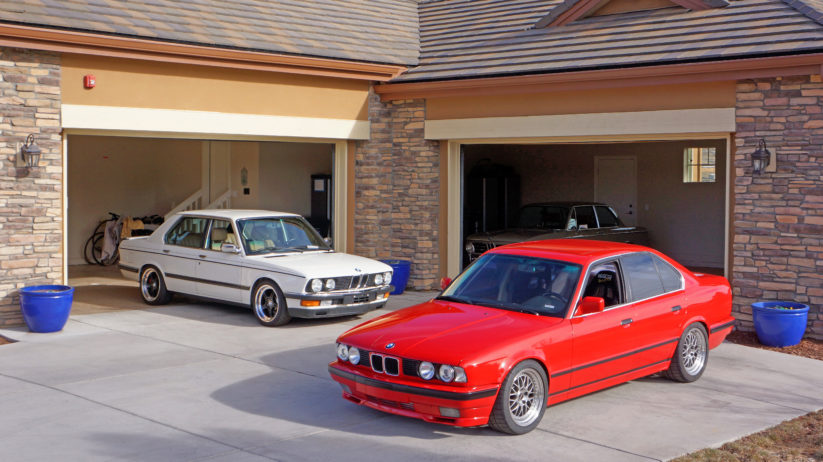The 1980s were a simpler time, a time when entertainment in your car was to be found through the steering wheel, not from an infotainment screen. It was a time when the BMW 5 Series did what nothing else could: It offered proper sports-car performance in a sedan so civilized that you could take your mother to church in it—and she would always be the first to arrive!
In the 1980s, BMW did one thing: it built the Ultimate Driving Machine.
Alas, times aren’t as simple as they used to be; the world has changed, and BMW has changed with it. Technology sells cars in the modern era, and by cars I mean crossovers—which can be found in every shape and size. But you can still buy a 5 Series that does what its predecessors did, and against the backdrop of the modern car, BMW is still the Ultimate Driving Machine. However, it is this backdrop that makes those BMWs from the 1980s so important; they are a lens to the past, a lens to a time when BMW was small, hungry, and focused, a time when BMW E28 and E34 5 Series reigned supreme.
When the E28 M5 was released, it was marketed as the “fastest saloon car in the world,” but if you wanted to save some money—and for the U.S. market, have it in a color other than black—you could opt instead for the 535iS, which could have been marketed as “a nearly-as-fast-as-the-fastest saloon car in the world.” The 535i and 535iS were powered by the 3.4-liter M30B34 engine, producing 182 horsepower but making 214 pound-feet of torque—only twenty fewer than the M5.
When the E28 was replaced, the M30 engine continued in the E34 535i (as the M30B35), with a power increase to 208 horsepower and 225 pound-feet of torque. The leap between the E28 and E34 was more evolutionary than revolutionary, until the 535i was phased out by the V8-powered 540i. This made both generations of 535i very similar, and they would be a rather boring comparison under normal circumstances—except for two local examples that are anything but either.

Russ Nelson’s 1987 535iS.
[Photo: Alex McCulloch]

[Photo: Alex McCulloch]

This is no ordinary 535iS; a 3.8-liter stroked S38 from an M5 resides under the hood.
[Photo: Alex McCulloch]

Naked E34 M System wheels with black centers and polished lips are mounted over Wilwood Superlight brakes.
[Photo: Alex McCulloch]

A complete M5 interior matches the engine.
[Photo: Alex McCulloch]
The M5 conversion was continued inside the cabin with an M5 leather dashboard, seats, steering wheel, and an illuminated shift knob. The exterior was retrofitted to European spec, with an M Technic-style stripe, Euro bumpers, Euro “smiley” headlights, and a functioning Euro intensive (headlight) cleaning system. Power is routed through an M5 flywheel, a heavy-duty Sachs clutch, a Getrag G280 gearbox with a UUC short-shift kit, and a 3:73 limited-slip differential. The car rides on Dinan springs, Koni front/Bilstein rear sport shocks, and “naked” seventeen-inch E34 M System wheels over Wilwood Superlight brakes. Even the trunk was retrofitted with M5 bits, including the battery location, carpets, and a full toolkit, including red-handle screwdrivers and a neatly folded blue BMW rag—should you need to dab off the occasional drool from onlookers!
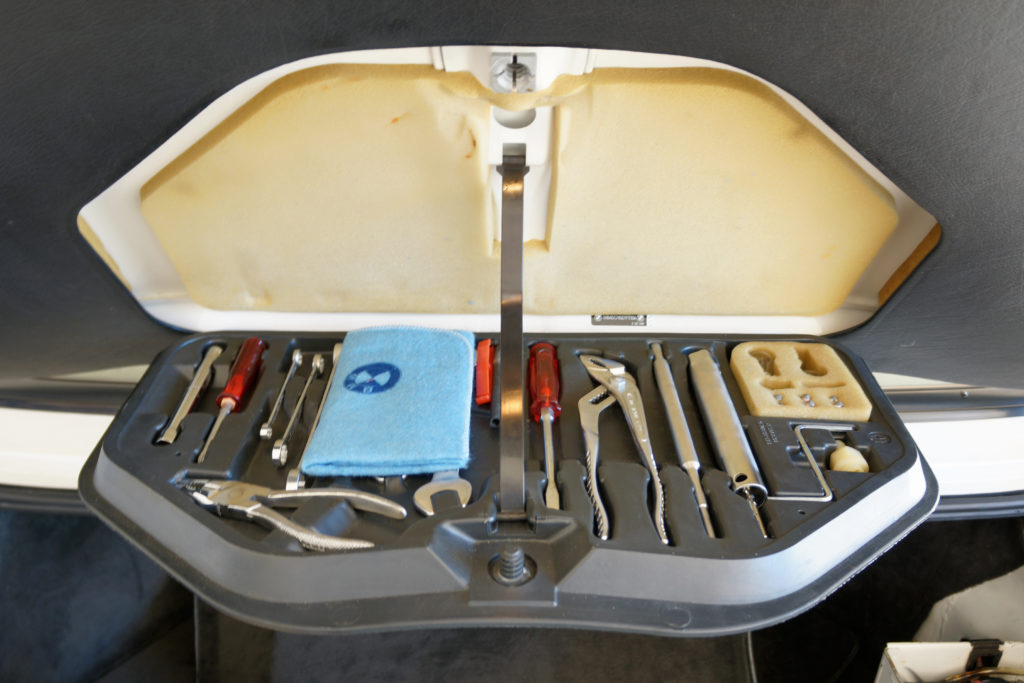
A full toolkit includes the elusive red-handle screw drivers and a blue BMW rag.
[Photo: Alex McCulloch]

Nick McMahan’s 1990 535i.
[Photo: Alex McCulloch]
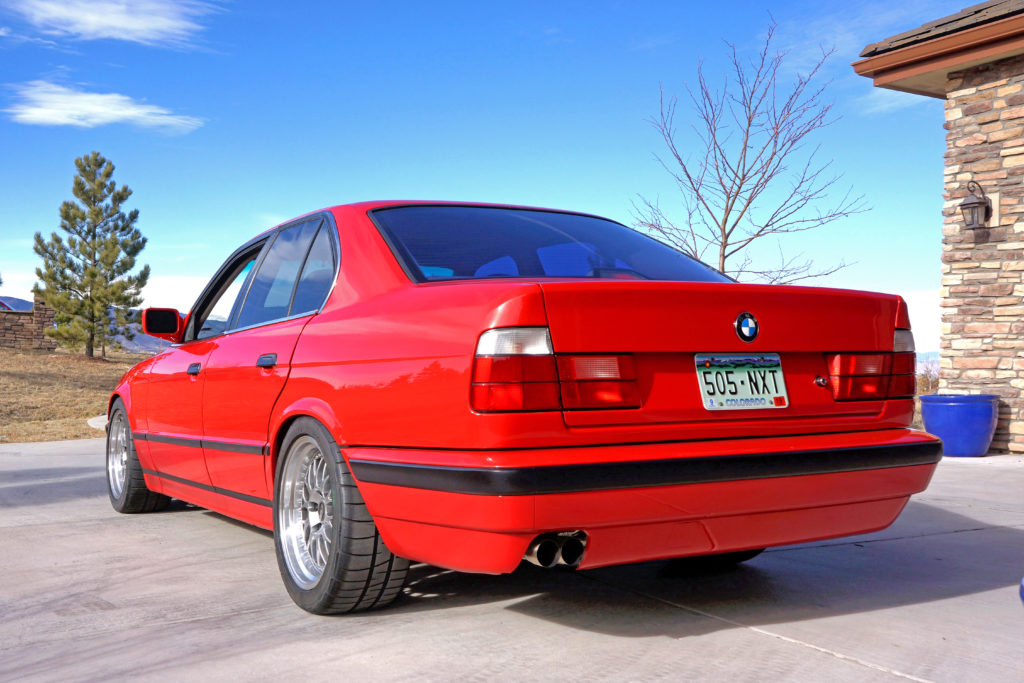
[Photo: Alex McCulloch]
Nick had the 232,000-mile 535i repainted in the original Brilliantrot, including the lower rocker-trim panels that were all-black on early E34s. He disassembled and inspected the original M30 engine and found that despite its nearly quarter of a million miles, it needed little more than resealing typical oil leaks and minor updates. This was important, because Nick’s next order of business was to mount a massive turbocharger! Now, before the purists scoff, Nick’s work is far from the poorly fitted eBay turbo setup so often seen on the E34 forums; it is a proper build that would meet BMW’s or even Alpina’s standards of perfection.

Nick’s fabrication is functional artistry.
[Photo: Alex McCulloch]

[Photo: Alex McCulloch]
Nick’s real artistry is in his fabrication; all intake, intercooler, and exhaust plumbing was fabricated through modular stainless-steel tubing and V-band connections. The unstressed portion of the radiator core support was drilled out and replaced by the intercooler and reinforced as if it were a factory fitment. While he was at it, he had the valve cover wrinkle-coated black with polished lettering.
Ever the environmentalist, Nick’s custom exhaust includes a GESI catalytic converter upstream of a Vibrant muffler that fast-passes Colorado emissions. An aluminum flywheel mated to an 850Ci twin-plate clutch and E34 540i flex disc easily handle the power and allow the engine to rev smartly. To keep it from revving too smartly, and to take advantage of the power for efficient cruising, Nick added a taller-geared 3:23 limited-slip differential. Corner-balanced Megan Racing coil-overs connect that power to the road, while stopping is achieved by Brembo four-piston calipers over 850CSi rotors in the front and rear E34 540i brake assemblies.
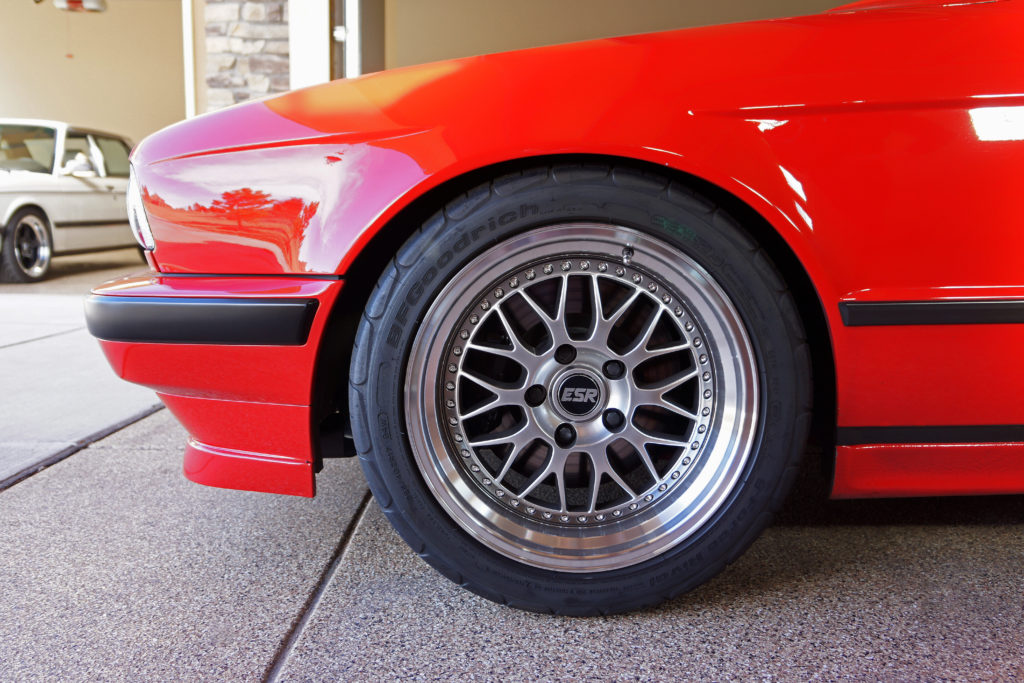
ESR replica wheels cover Brembo 850CSi front brakes.
[Photo: Alex McCulloch]
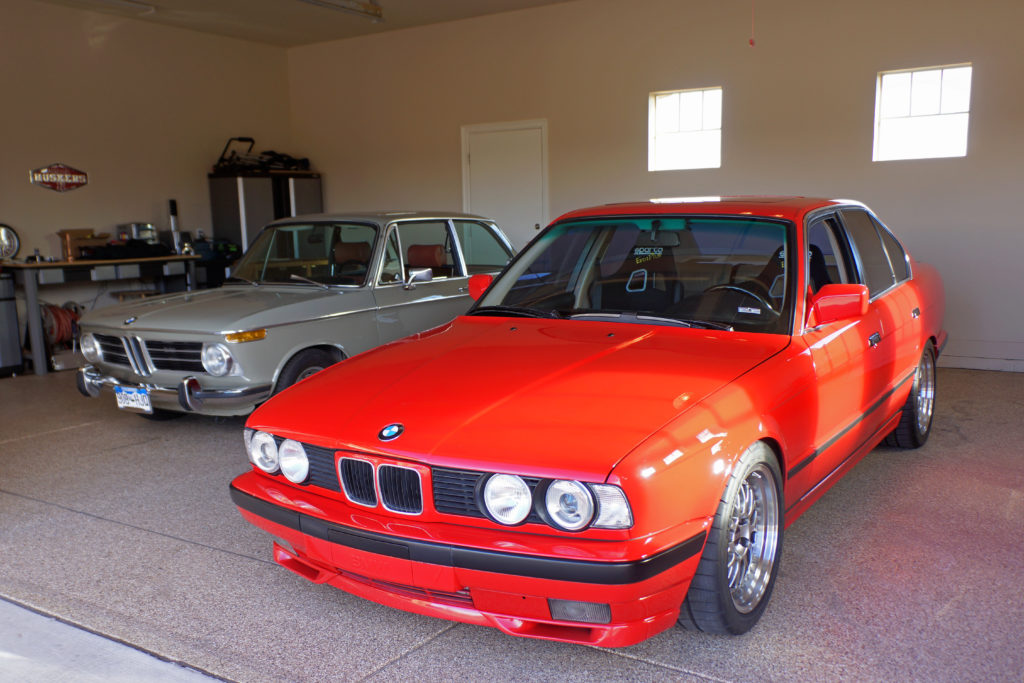
Splitter-mounted brake-cooling ducts help prevent fade.
[Photo: Alex McCulloch]

Early E34s had darker Natur leather than later models.
[Photo: Alex McCulloch]
Inside the car, the early E34 Natur leather is a much richer tan, and complements the Brilliantrot better than the Parchment leather that followed in late-model E34s. Nick has kept the inside of the 535i relatively stock, with the exception of Sparco Evo II Plus seats, a ZHP shift knob, and an M Tech II steering wheel. At first the racing seats seemed a little aggressive, but that would make sense in due time.
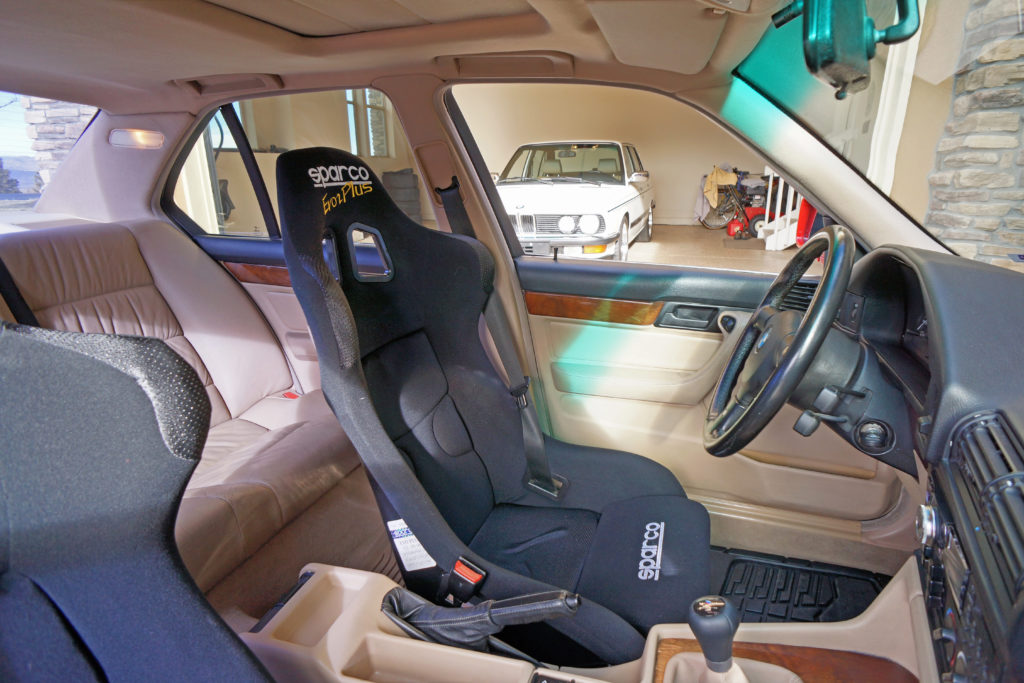
Sparco fixed-back racing seats were a clue of what was to come.
[Photo: Alex McCulloch]

The Euro bits include headlights, grilles, a headlight-cleaning system, and chrome Euro bumpers.
[Photo: Alex McCulloch]

There’s more chrome on the mirrors, door handles, and trim.
[Photo: Alex McCulloch]
Even though the M System wheels were from the E34 period, with black centers and polished lips, they add rather than detract from the backward-time-travel theme. Black body striping accents the black wheel centers, and alludes to what’s under the hood—along with a mysterious 537i badge.

The mysterious 537i badge alludes to what’s under the hood.
[Photo: Alex McCulloch]
Stock S38s do need to be revved to be exploited, and that is part of the fun, but the additional displacement of Russ’s E28 is most noticed in the lower revs, making it better all around. That doesn’t stop with the engine, either; E28s are big cars, but the well-matched brakes and suspension allow Russ’s E28 to apex like a much smaller and lighter car than it should—without compromising its civility. Body roll is minimal, turn-in is neutral despite the E28’s vague steering-box design, and throttle-steer on exit can be modulated for the mission, be it a Sunday-morning church delivery or Saturday-night fever.
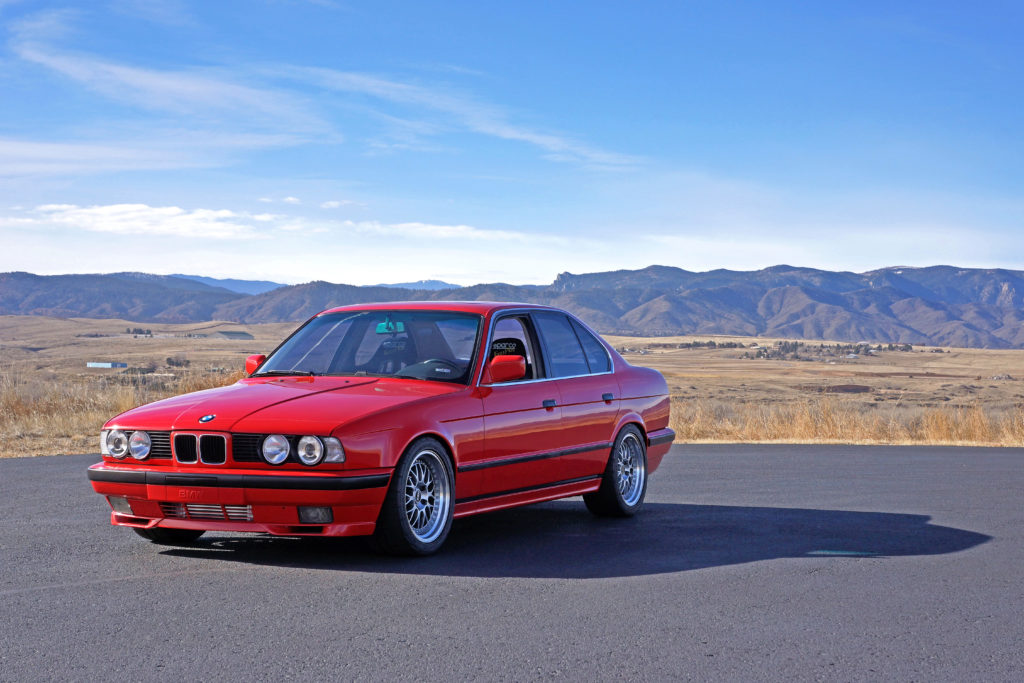
Nick’s 535i is a wolf in sheep’s clothing.
[Photo: Alex McCulloch]
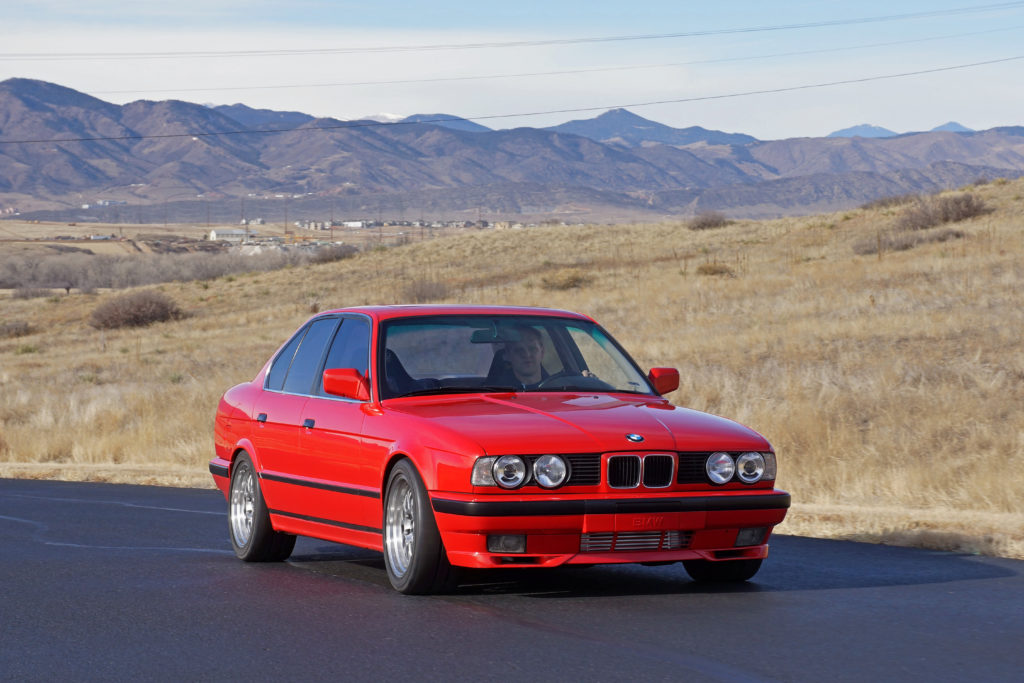
Nick takes the wheel of his 535i.
[Photo: Alex McCulloch]
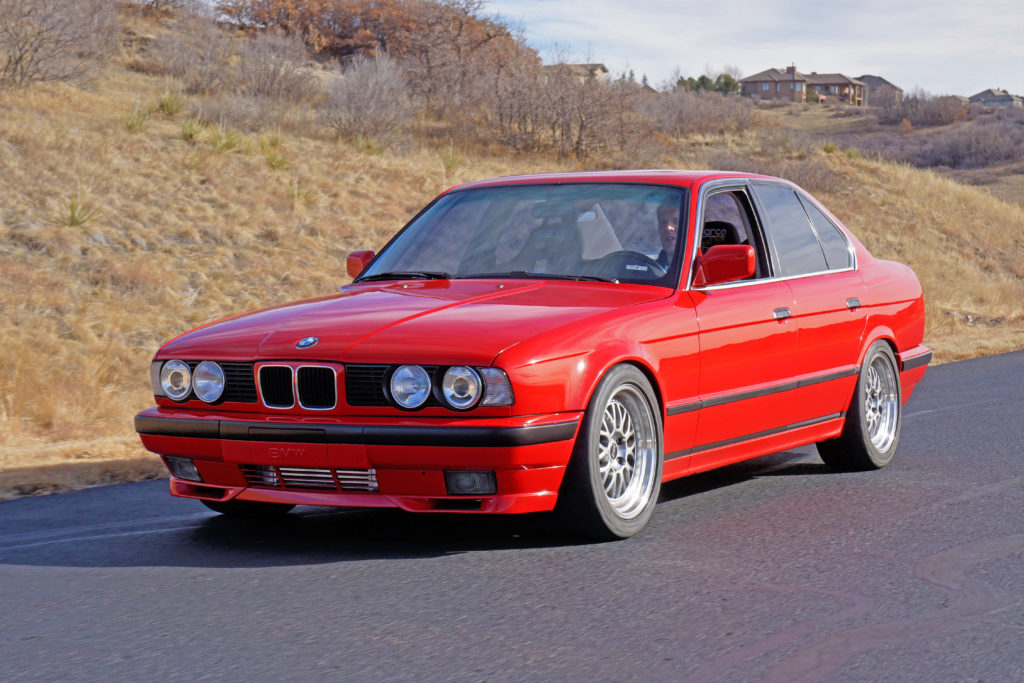
[Photo: Alex McCulloch]

[Photo: Alex McCulloch]
Perhaps some modulation was in order, and that is where the artistry of Nick’s work shined. Through Nick’s airflow-focused fabrication the engine and turbo work in unison in a way that doesn’t compromise the linear torque delivery that M30s are famous for. Skillful throttle application above 2,000 rpm allowed the boost to be accessed smoothly throughout the powerband, which was complemented by the wonderful manners of the well-sorted E34 platform.
In fact, the beauty of the E34 is that despite Nick’s 535i having 500 horsepower, it doesn’t need any of the nannies that its F90 descendant does; it just does what you ask it to.

The E28 and E34 leave a legacy that continues to this day.
[Photo: Alex McCulloch]
[Photos courtesy Alex McCulloch]

